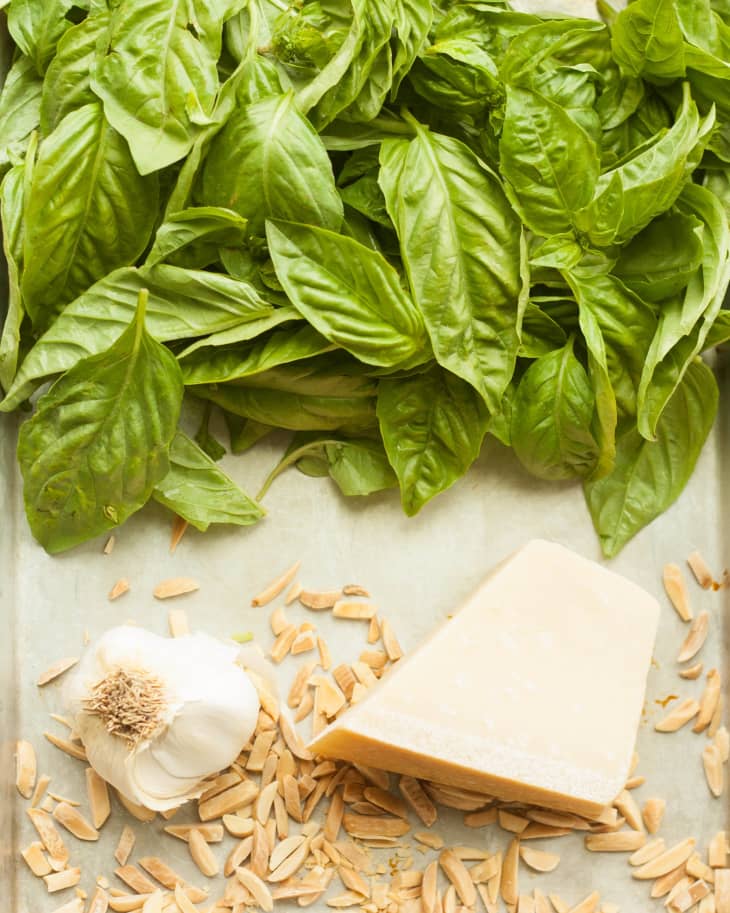Does Blanching the Basil Really Make Pesto Stay Green for Longer?
Pesto is such a perfect summer sauce — basil’s abundant and cheap, there’s no cooking involved, and it’s versatile enough to toss into pasta, spread on bread, or toss with grilled vegetables. The one downside is that it loses its vibrant green color quickly if it’s exposed to air, but supposedly blanching the basil leaves first will keep the pesto keep its color.
Does this actually work? We tested it to find out.
The Original Tip
I came across a couple of pesto recipes that blanched the basil leaves first:
- “Blanched” Basil Pesto — Food Network
- Pesto Genovese (Classic Basil Pesto) — Saveur
- The Trick to Smooth, Creamy Pesto — Fine Cooking
The Testing
I set out to test this by making two batches of this basic pesto, one with blanched leaves, and one with unblanched leaves:
→ Get the Recipe: How To Make Perfect Pesto Every Time
I carefully measured out the ingredients I would need for the pesto: basil leaves, almonds (I didn’t have pine nuts around), Parmesan, and olive oil, then divided each ingredient in half to have equal amounts for each batch.
Then I got to blanching half of the basil leaves: I dropped the leaves into boiling water for about 15 seconds, just until they wilted. I fished them out into a bowl of ice water to stop the cooking, then took the leaves out of the water and squeezed as much water as I could out of them with my hands. Finally, I rolled the leaves up in paper towels to pat even more water out of them.
Finally, it was time to process the pestos. I threw the first batch with fresh, unblanched leaves into my mini food processor, and it took a few minutes for everything to blend up since I had to scrape down the leaves into the blades a few times.
Then the blanched leaves went in with the second batch, and because they were wilted and compact already, processing was done in about 30 seconds, much faster and easier than the fresh leaves.
So how did the the pestos look side-by-side? And more importantly, how did they taste?
The Results
As you can see from the picture above, the blanched pesto on the right definitely had a lighter, more spring-green color, while the pesto on the left with unblanched leaves came out darker. The blanched pesto also had a smoother, more homogenous texture than the unblanched pesto.
Verdict: This is a mind-blowing tip … with a caveat.
Final Notes
While the blanched pesto was definitely greener and smoother, how the two pestos tasted mattered more to me. The winner here? Unblanched pesto by a mile. It tasted herbaceous, fresher, and well, like fresh basil. The blanched pesto’s flavors were muted, and to be honest, didn’t really taste like basil anymore. While the green color of the blanched basil was definitely more eye-appealing, I’ll trade some color for vibrant flavors instead.
Have you ever tried blanching the basil leaves for pesto first?
